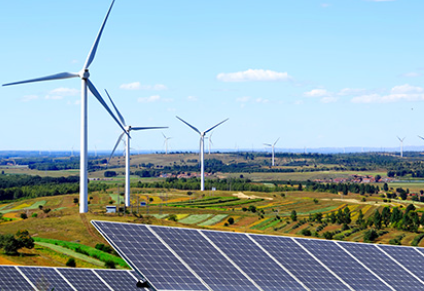India’s Renewable Energy Growth and Investment
India’s renewable energy sector has rapidly evolved over the past decade. The country recently achieved an important milestone of 200 GW in renewable energy capacity. This includes nearly 90 GW from solar power alone. The government has set an ambitious target of reaching 500 GW by 2030. This requires adding approximately 50 GW annually.
Current Capacity and Future Goals
India’s renewable energy capacity has grown exponentially. In FY24, India added 18 GW of renewable energy. Projections suggest an increase to 30-35 GW in FY25. Solar power leads this growth, contributing to the overall capacity.
Global Context and Competition
India’s solar market is relatively small compared to global leaders. In 2023, China installed 253 GW of solar capacity alone. The USA added 32 GW during the same period. India accounted for only 3% of global capacity additions, ranking fifth. Despite this, with increased focus, India aims to secure the second position after China.
Global Solar Market Expansion
The global installed solar PV capacity is expected to reach 11,000 GW by 2030. This represents an investment of approximately US$4-5 trillion. Recently, investments in solar PV reached US$500 billion. Annual investments may approach US$1 trillion by 2030.
Investment Opportunities in India
India’s annual addition of 50 GW presents an important opportunity for global investors. Estimated investments in this sector stand at US$17-18 billion per year. This figure only accounts for generation facilities. Additional investments will be necessary for manufacturing solar PV modules and cells.
The majority of investments in India’s renewable sector come from debt. Domestic banks and financial institutions contribute 70-75% of this funding. Private equity plays important role in equity investments. Cumulative foreign direct investment (FDI) in renewables exceeded US$17 billion by FY24.
Role of Global Investors
Global investors increasingly allocate capital to infrastructure, including renewables. Public pension funds raised their infrastructure allocation from 4.4% in 2020 to 6.57% in 2024. The top 75 global funds now have nearly US$725 billion invested in infrastructure.
Alignment with Global Goals
India’s green energy initiatives align well with global sustainability targets. This alignment has attracted global investor interest. Access to capital for the Indian solar PV industry appears secure. The sector is poised for robust growth in the coming years.
Important Facts for Exams:
- GW – Gigawatt is a unit of power equal to one billion watts. It is commonly used to measure the output of power plants and the capacity of electrical grids.
- FDI – Foreign Direct Investment refers to investments made by a company or individual in one country in business interests in another country. It plays important role in economic development.
- PV – Photovoltaic technology converts sunlight directly into electricity. It is a key component of solar energy systems and has seen important advancements in efficiency and affordability.
Month: Current Affairs - November, 2024
Category: Economy & Banking Current Affairs


